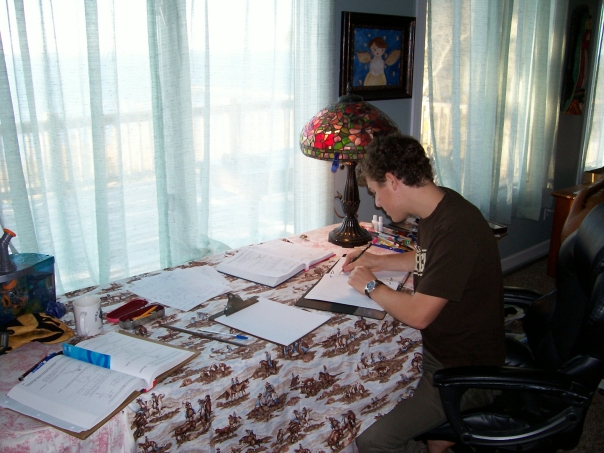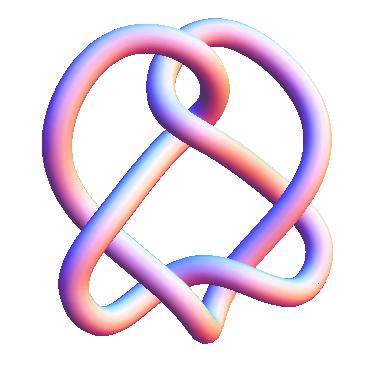A talk by Harvard Psychologist, Dan Gilbert about how we make flawed decisions. Dan demonstrated, with a number of great examples, how we fail to follow Bernoulli’s equation for expected value.
Archive for the ‘Ed Does Math’ Category
TED Talk – Decision Making and Expected Value
In Ed Does Math, Life and living on 29 April 09 at 1:11 pmGenius board
In Ed Does Math on 11 March 09 at 10:08 amMany brave Pi-Enthusiasts successfully completed the Pi-Day Challenge! Will you be one of them?
Posted using ShareThis
Plan Ahead for Pi Day!
In Ed Does Math on 11 March 09 at 9:48 amFor true enthusiats, celebrate irrationally on March 14th, 26 seconds after 1:59 [the pi second] !
Here are the first 314 digits …just in case you wanted to memorize a few for recitation on Pi Day.
3.14159 26535 89793 23846 26433
83279 50288 41971 69399 37510
58209 74944 59230 78164 06286
20899 86280 34825 34211 70679
82148 08651 32823 06647 09384
46095 50582 23172 53594 08128
48111 74502 84102 70193 85211
05559 64462 29489 54930 38196
44288 10975 66593 34461 28475
64823 37867 83165 27120 19091
45648 56692 34603 48610 45432
66482 13393 60726 02491 41273
72458 70066 063
Thinking – With Assumption Focus
In Ed Does Math on 5 March 09 at 12:44 pmI was reading an interesting post on one of my favorite blogs today. Two-Pi relates a story about his son’s cub scout meeting. The leader was talking about “what to do in case of an emergency” and one boy kept escalating the scenario to a more extreme situation; “yeah, but what if…?”. Two-Pi muses —
“Hey, he’s thinking like a mathematician!” He knows the stock answer that is expected, and he’s asking what happens if we change the hypotheses, considering a related problem where the conclusion doesn’t follow. HE’S DOING MATH!
— read the full story here: Thinking Mathematically- by 360
A corollary comes to mind — teaching introductory physics, I find it useful to frequently remind students to focus on assumptions made when building various “models” .
For example — introductory kinematics equations are generally formed with an assumption of constant acceleration — Newton’s laws are introduced in the context of “point particles” and for velocities << c — torque is introduced on “rigid bodies”, etc. By stressing the limitations of a particular model, students often get curious enough to ask the “what if…?” questions. Of course, it also helps prevent them from misusing/misapplying formulas in situations when these assumptions are violated.
One common observation as I tutor HS Calculus students, is that I often find they have not been taught or have not paid attention to the “conditions” which must be met for certain theorems to be valid. When they are preparing for AP exams, they often flounder because they don’t know the “if” portion of a theorem. Consider:
Rolle’s Theorem
If f(x) is continuous over the closed interval [a, b] ,
if f(a) = f(b) = 0 , and
if f ‘ (x) exists at least over the open interval (a, b),
then
there is at least one value (x_1) in the open interval (a, b) such that the derivative @ x_1 = 0.
By stressing the importance of wrestling with the assumptions, students develop a deeper understanding of the theorem/concept/model and are trained to ask relevant “what if…?” questions.
So, my suggestion for Two-Pi, who presents the following challenge:
So the challenge, as we prep for our classes: find a way to ask questions with obvious answers, that will get students motivated to say “yeah yeah, but what about THIS situation?”, and aim to “lead them” (pushing rope comes to mind) toward the actual course content we want to explore.
Try emphasizing the antecedent (or the conditions which must be met, the assumptions, the premise, …) and I think you will find students more naturally asking deep and relevant “what if…?” questions.
Somehow I am reminded of the framework for the Ten Commandments — “thou shalt not…” — this sets up the boundaries; you are free to love and work and serve… just do it within these “boundaries” and all will be well. Carver uses the concept in his Policy Governance model when recommends writing the executive limitations policies in the negative. In other words, the executive director is free to work toward fulfilling the mission of the organization within certain prescribed limits, which are clearly written into policy statements. All the other categories of policy are written in the affirmative, as positive statements.
And now a “shout out” to xkcd
Mirrors
In Ed Does Math on 26 January 09 at 11:05 amI loved this post at Division By Zero and recommend it here for all my math and physics students. Dave Richeson answers the question: “Why do mirrors reverse right and left but not up and down?”
Home Schooling — Mathematics
In Ed Does Math, Math Tutor on 23 January 09 at 2:29 pmNow into my second “school” year teaching mathematics to a young man who is home-schooled, it seemed that I might be able to post some relevant perspective on the advantages and disadvantages of our particular educational situation.
When I was first enlisted to work with Ian on Algebra I, he was already committed to using Saxon materials. I had familiarity with the Saxon method, which has a pedagogical bent toward skill building through continuous review and incremental concept building. Each lesson adds a “nugget” of new material, has a few practice problems, and then a homework set which consists of 30 problems. Perhaps 4-6 of the problems are on the new “nugget” and the rest are review problems. It is imperative for the instructor (in this case me 😉 ) to tie the concepts together during a brief time of direct instruction and to then work alongside the student as they practice solving problems. Feedback and homework corrections are vital to catching and eliminating conceptual errors or misunderstandings, because, misunderstandings can potentially be compounded until review problems are no longer just review, but a large and daunting set, full of menacing confusion. With this last point in mind, an important procedural change was made this school year. I now grade all the homework and provide Ian with a graph of the scores, updated weekly. This simple but important modification over last year, has markedly reduced the number of “bad” homework papers. This was one of the big issues from last year, fighting to maintain an acceptable level of quality and constancy with Ian’s work. One lesson, Ian might get 90% correct and the next it would be <50%. This should not happen with the Saxon method — and is not happening anywhere near as much now that Ian can see and is confronted with actual graphical data about his performance on homework.
In future posts, I’ll discuss the role of faith and religion, the relationship which has developed and my use of supplemental materials to bolster the geometry content in a Saxon Algebra I, Algebra II sequence.
Just thinking “out loud” here 😉 Peace!
Mathematica
In Ed Does Math, Math Tutor on 12 December 08 at 5:08 pmThe A side and the B side of discovering new tools:
Side A–
I feel like an old man who is running out of time to learn. Having been involved in math education for a number of years in rather small town settings, I have been respected as a math tutor and have had quite solid success teaching K-12 mathematics [through AP Calculus]. My pedagogical knowledge is pretty solid as well as my grasp of K-12 content, especially since I can draw upon a number of applications from physics and business background/experience. In school settings, I have always felt comfortable with available technology. I am fluent with the TI calculators, I can write programs, graph and calculate and display results with the best K-12 teachers around. Today, however, I was able to clearly see how little I really know and how far I have to go in order to grab a hold of some self respect again. Experimenting with Mathematica felt like drowning in information. There is just so much cool mathematics, I have not even scratched the surface! The graphical and interactive features in Mathematica are astounding. Here is a simple graphic of a Knot, which is so easy to generate, it is just ridiculous. And I have never had any opportunity to study these . I have no idea whatsoever, how to describe this mathematically, what it’s significance is, what applications it has, … you get the idea. I feel ignorant.
Side B —
This is one of the most exciting days of my life. I am like a kid in a candy store. I happen to love mathematics and I have struggled to learn LaTeX in order to typeset math symbolically over the last few years. I have struggled to display three dimensional graphs and surfaces encountered when teaching about functions and solids of revolution in calculus, for example. But today, I began learning with a new (for me), amazing tool. Mathematica has opened a world which was previously veiled, scales have dropped away from my crusted mind’s eye, and I am intellectually alive and stimulated. I just don’t know why it has taken me so long to jump on the technology band wagon and embrace this tool warmly and fully, but I am excited that I have seen the light today. How long before I am productive with this and am sharing new discoveries, time will tell.
So when is the last time you discovered a new tool that opened up seemingly limitless potential for learning?







